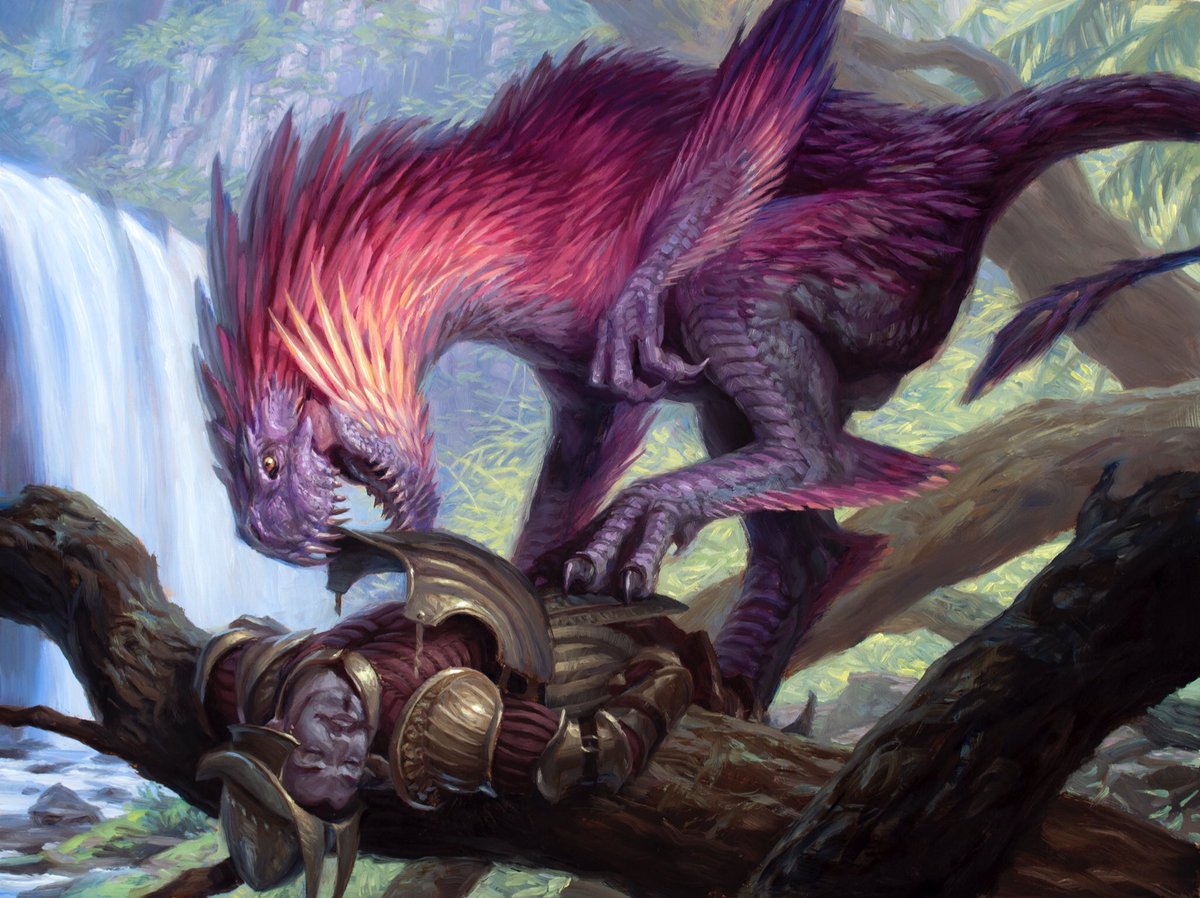Welcome back to the How to Play Magic: The Gathering series from Star City Games. If you need to catch up, you can check out the previous article, on card rarities, or start at the beginning with The Basics.
Today we’re talking about card sets and how to figure out what sets your Magic cards are from, thanks to a few helpful hints. Let’s say you have some Magic cards with a certain theme or mechanic you like, and you want to get more cards like them. How can you figure out what packs to get or where to look for similar cards?
Set Symbols
By checking the set symbol in the middle right of most Magic cards, you’ll find a symbol with a rarity color. This symbol notates which set the card you are looking at came from, and the color tells you what its rarity is.
Let’s say I’m looking through my cards, see Ripjaw Raptor, and would like to get my hands on more Dinosaurs and check out what other cards have the enrage mechanic. I’d look at that set symbol and see it has a symbol of a compass or a ship’s wheel. I happen to know this symbol represents Ixalan. If you don’t know what set the symbol is from, you can look online at a listing of set symbols and figure it out.
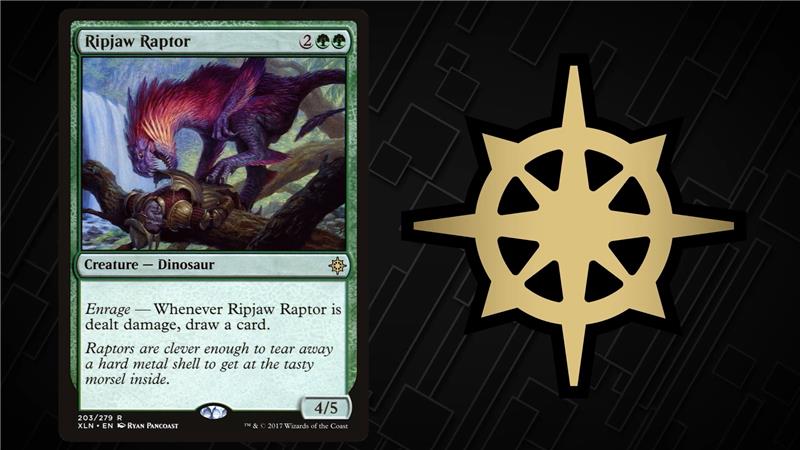
We can also tell that Ripjaw Raptor is a rare because the set symbol is gold. If the symbol is black, the card is common. If the symbol is silver, it is uncommon. Gold means a rare, and finally, if it is orange and red, it’s a mythic rare. Check out our previous article on card rarities for more details.
Once we know Ripjaw Raptor is from Ixalan, we can look through the other cards in the set and find other Dinosaur cards to build a deck around them. Every non-Core Set since Arabian Nights, released in December 1993, has an expansion symbol, though the changing of the color for rarity didn’t start until Exodus, released in June 1998. There are more than 85 Magic sets and expansions, not including supplemental products, spanning over more than 25 years. There are many symbols to be on the lookout for now, so there’s lots to learn.
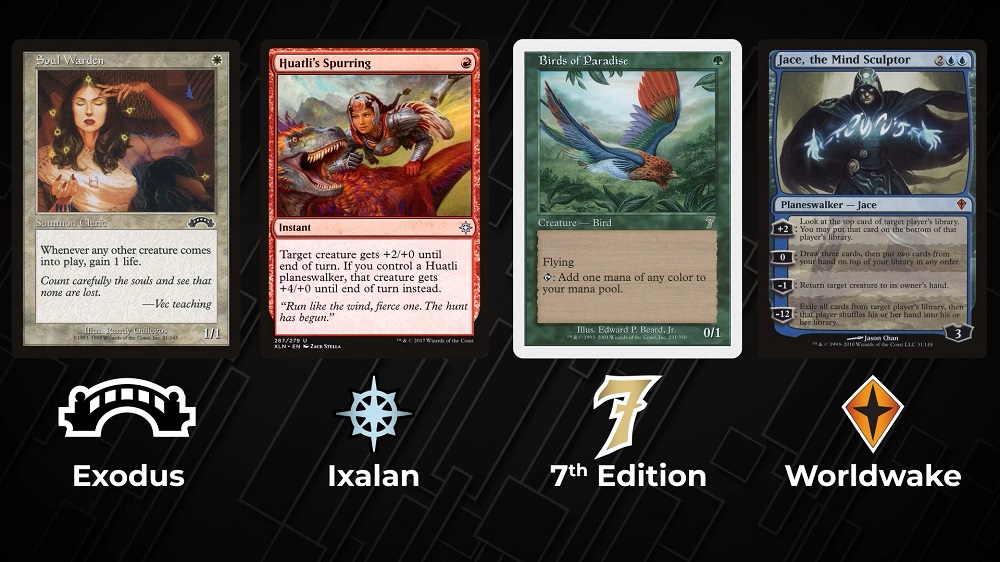
Early Sets Without Symbols
The earliest sets didn’t have expansion symbols. Core Sets also didn’t start using set symbols until 6th Edition. As a result, telling cards from these sets apart can be tougher. For the first few Core Sets, called Alpha, Beta, Unlimited, and 3rd Edition (also called Revised), it’ll take detective work to figure out which set the cards belong to. All four sets not only don’t have an expansion symbol, they also don’t have a date or any additional information at the bottom of the card, like later sets will have.
So how do you tell them apart? First, Alpha and Beta will have black borders, while Unlimited and 3rd Edition have white borders. Alpha and Beta cards look incredibly similar, with the main difference being that Alpha cards’ corners are much rounder than on Beta.
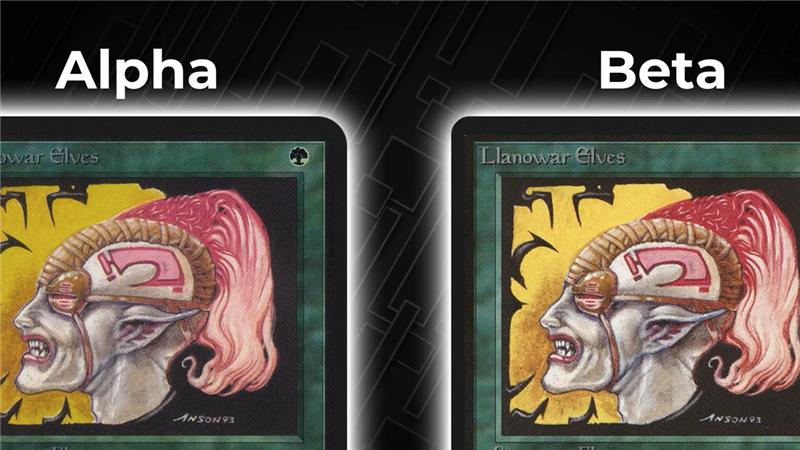
For Unlimited and 3rd Edition, the main difference is that the inside border on Unlimited is double-beveled, while the inside border on 3rd Edition is single-beveled. Look closely and you can spot it. You’ll notice differences in the text boxes as well, with Unlimited versions spelling out the word “tap,” while 3rd Edition uses the “T” symbol. Also notice how the 3rd Edition version uses the green mana symbol in the text box instead of “1 green mana,” like the Unlimited version.
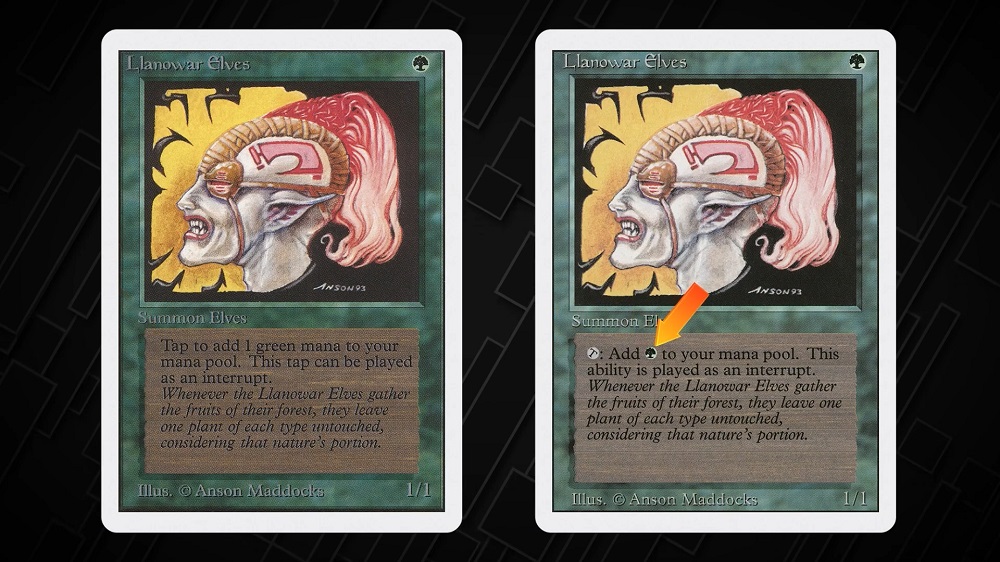
For 4th Edition and 5th Edition, the artist credit is in smaller text. Most notably, Wizards of the Coast added their copyright and year. 4th Edition was released in 1995 and 5th Edition was released in 1997. Each Core Set from 6th Edition on will have a set symbol, just like all the other sets after Arabian Nights.
Related Information
A couple of other interesting notations appear on cards. You can find the collector numbers of each card in sets from Exodus on. On Magic 2015 and later cards, you can find the set code and language in the bottom left underneath the collector number, as well as a rarity indicator: C for common, U for uncommon, R for rare, and M for mythic rare.
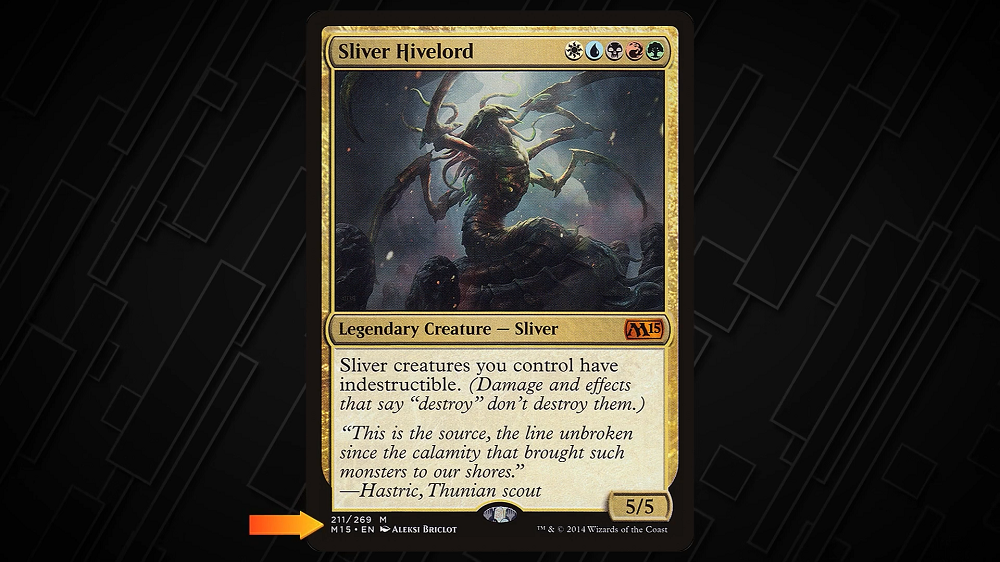
This should be enough information to help you figure out what sets your cards are from. If you have any trouble, you can always search for the name of the card on StarCityGames.com and scroll through the various versions of the card until you match what you’re looking for. By doing this, you may even find the card was reprinted in another set, potentially with different art or border treatment.
Thanks for reading! Keep looking out for more How to Play articles from Star City Games.
Previous Article
Next Article

